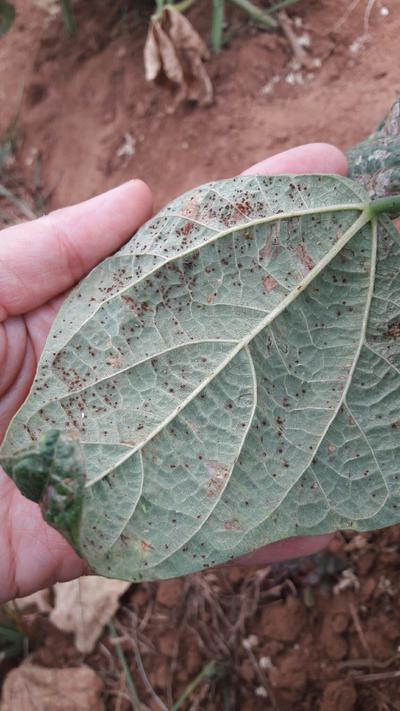Bean Rust
Uromyces appendiculatus
Fungus
In a Nutshell
- Tiny brown to yellow pustules on underside of older leaves.
- Surrounded by yellow halo.
- Symptoms can also appear on petioles, stems and pods.
- Yellowing and wilting of leaves.
Can also be found in
Symptoms
First symptoms develop as minute brown to yellow pustules which rupture the epidermis of older leaves, mainly on the underside. With time, they can be surrounded by a halo of yellow chlorotic tissue and may turn darker. Elongated pustules of the same sort may appear on petioles, stems and pods. Leaves may become chlorotic and dry, and may fall off earlier. Defoliation may ensue, with the consequences on yield. Bean rust may kill young plants. On older plants the fungus has a largely negligible effect on yield.
Recommendations

Organic Control
Bio-insecticides based on Bacillus subtilis, Arthrobacter and Streptomyces species have a marked effect on the progression of the disease.

Chemical Control
Always consider an integrated approach with preventive measures together with biological treatments. Triazole and strobilurin fungicides show promising results in controlling bean rust.
What caused it?
The fungus Uromyces appendiculatus overwinters in plant residues in the soil. It is an obligate parasite, which means that it needs plant tissues to survive. The initial infection occurs when the spores are dispersed onto the plants via wind, water and through insects. The fungus thrives in high humidity and elevated temperatures. Spores can spread very rapidly in these conditions. The disease is more severe under prolonged periods of warm, moist weather.
Preventive Measures
- Plant resistant or tolerant varieties.
- Do not plant beans on infected spots.
- Intercrop with non-host crops such as maize.
- Eliminate weeds and volunteer plants from the field.
- Avoid excess irrigation and do not use overhead sprinklers.
- Cut off and remove all infected parts.
- After cropping, clear up and dispose of all plant debris.
- Carefully choose and schedule planting dates and irrigation to avoid long periods of leaf wetness when temperatures are high.
- Avoid excessive nitrogen use and ensure adequate potassium fertilisation.



